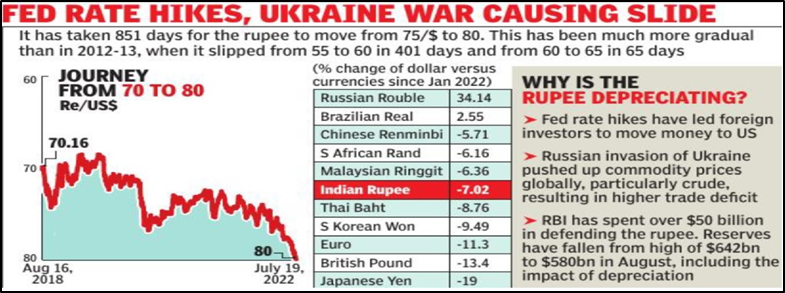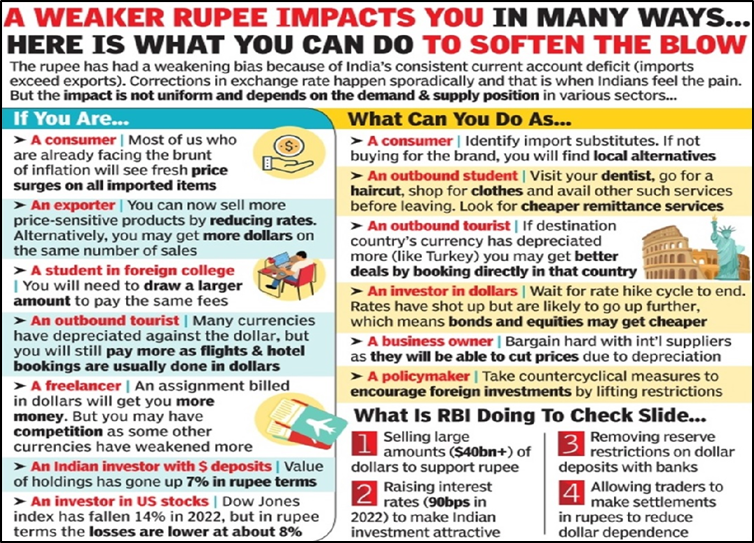ForumIAS announcing GS Foundation Program for UPSC CSE 2025-26 from 19 April. Click Here for more information.
ForumIAS Answer Writing Focus Group (AWFG) for Mains 2024 commencing from 24th June 2024. The Entrance Test for the program will be held on 28th April 2024 at 9 AM. To know more about the program visit: https://forumias.com/blog/awfg2024
Contents
Source: The post is based on the article “Explained: What Rs 80 to a dollar means” published in Indian Express on 20th July 2022.
What is the News?
The Indian rupee has breached the psychologically significant exchange rate level of 80 to a US dollar in early trade.
What is the rupee exchange rate?

The rupee’s exchange rate vis-à-vis the dollar is essentially the number of rupees one needs to buy $1.
This is an important metric to buy not just US goods but also other goods and services (say crude oil) trade which happens in US dollars.
What happens when the rupee depreciates?
Broadly speaking, when the rupee depreciates, importing goods and services becomes costlier.
But if one is trying to export goods and services to other countries, especially to the United States, India’s products become more competitive because depreciation makes these products cheaper for foreign buyers.
What will be the impact of the weakening of the rupee on different sectors in India?

Costlier Imports and Inflation: The most crucial impact would be on inflation as the country imports nearly 80% of its crude oil needs. This would mean that imports would become costlier and travel through the value chain to raise input costs.
Current account deficit: Since a large proportion of India’s imports are dollar-denominated, these imports will get costlier. Costlier imports, in turn, will widen the trade deficit as well as the current account deficit, which, in turn, will put pressure on the exchange rate.
| Read more: The curious case of India’s rising forex reserves and falling rupee |
Is there anything to worry about?
As things stand, India is still not facing an external crisis. Take for instance the issue of external debt. Long-term data shows that India is in a relatively comfortable position.
However, this does not mean there is nothing to worry about. For instance, forex reserves have fallen by over $50 billion between September 2021 and now. In these 10 months, the rupee’s exchange rate with the dollar has fallen 8.7%, from 73.6 to 80. For context, historically the rupee depreciates by about 3% to 3.5% in a year.
| Must Read: The rupee’s ‘new lows’: Why it’s not necessarily a cause for concern |




